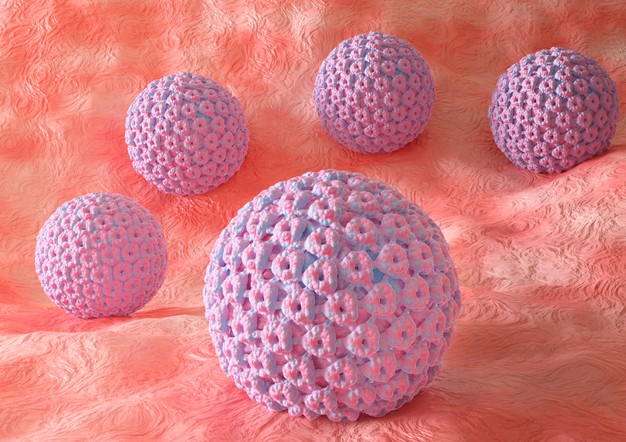How common is HPV infection?
HPV is a very common virus. Research has shown that at least three in four people (75%) who are sexually active will come in contact with HPV at some point in their lives. There are many different types of HPV. There may be an infection from one type and later it could subside, but then you may be infected by a different type. It is possible, although difficult, to be infected by the same type a second time.
The types of virus associated with the genital area are divided into:· Low-risk types (such as types 6 and 11) that cause warts and mild (non-cancerous) changes in cervical cells.· High-risk types (such as types 16 and 18) that are primarily responsible for severe (precancerous) changes or cervical cancer.Pathological results on cervical smears are due to both high and low risk types.
What does HPV infection cause?
As with many other sexually transmitted diseases, there are often no signs or symptoms when the initial infection with the virus occurs. Many people are carriers of the virus and transmit it without knowing it.HPV infection can cause:
- Genital warts. About 12 types of the virus are responsible for their appearance. These skin-coloured hypertrophic “moles” appear in and out of the vagina, penis and can spread to the skin near the genitals. Warts can also develop around the anus, vulva, or cervix.
- Genital cancer. About 15 types of HPV (high-risk types) are mainly associated with cervical cancer, and less commonly with cancer of the vulva, vagina, anus and penis. They can also very rarely cause cancer of the mouth and throat.
How is HPV infection transmitted?
HPV is mainly transmitted through sexual contact (vaginal, anal or oral sex). Penetration during sexual intercourse is not necessary for infection. HPV is also transmitted through direct skin-to-skin contact. Having sex with a partner who has the virus, regardless of gender, is the most common way of transmitting the infection. It is possible for someone to become infected with more than one HPV virus. It is estimated that most people come in contact with the virus during the first 2-3 years of their sexual life. In 90% of cases the body successfully fights the infection and the body is “cleansed” of the virus.It is worth noting that
HPV virus is not transmitted by the following:
- Sharing objects
- Sheets and towels
- Cutlery and glasses
- Toilet seat
- Swimming in the pool
- Shared bath or jacuzzi
- Holding hands or hugs
HPV test
The human papillomavirus (HPV) is the main cause of the abnormal cervical cells. There are more than 100 different types of HPV, some of which are high-risk types associated with cervical cancer, and some are low-risk types associated with other conditions, such as genital warts. Most cervical cancers are caused by high-risk types of HPV-16 and HPV-18.
Following successful clinical trials, HPV testing has been added to the Cervical Cancer Screening Program in the United Kingdom, Australia, USA, New Zealand and other European countries. If the cervical smear test shows low-grade cell abnormalities, the sample should be automatically tested for HPV. If HPV is present in your sample, you should be referred for colposcopy and, if necessary, treatment. If the HPV virus is not detected, you will continue to be screened as per the national screening programme.
If the sample shows more significant cellular changes, you will need to see your gynaecologist for a colposcopy without an HPV test. In many countries the HPV test is the first test in the screening sample (HPV triage), which means that in these cases the sample is only being tested for abnormal cells if HPV is detected. If the HPV virus is not found, women are called for a smear test in 3 to 5 years (depending on age).
Can the HPV virus be prevented?
HPV can be very difficult to prevent, which is one of the reasons why cervical screening is so important. Using a condom during sexual intercourse may reduce the risk of developing HPV infection, however condoms do not cover the entire genital area they do not guarantee prevention and the spread of HPV.
HPV vaccination offers some protection against HPV and is now offered to all girls aged 12 to 13 as part of the Child Vaccination Program in many countries (Australia, United Kingdom, New Zealand, etc.). Vaccine prevention against HPV types 6, 11, 16 and 18. It protects against the two types that are responsible for 70% of cervical cancers (16 and 18) and the two types associated with known genital warts (6 and 11). Studies have already shown that the vaccine protects against certain types of HPV for about 10 years, although experts expect that the protection could last longer.
It is important at this point to emphasize that the best treatment is prevention. Therefore, although the virus can be transmitted despite the use of a condom, as the infection may be located in the genital area, the condom has been and remains the best measure to protect yourselves against sexually transmitted diseases and of course against HPV.




